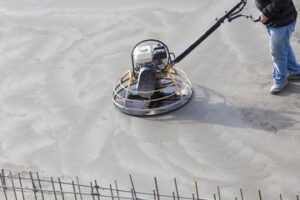A tree service offers several services, including pruning, mulching, stump grinding, and fertilization. It may also provide emergency services, such as storm damage repairs.
It’s important to check insurance and certifications before hiring a tree service. Look for companies that have general liability and workers’ compensation insurance. Contact Southern Tree now!

Trees are important to your home’s curb appeal and provide beauty and protection. They also prevent soil erosion and increase property value. Proper maintenance includes trimming, pruning, and removing dead limbs. These tasks require the skills and experience of a certified arborist. Look for a company with a team of professional arborists well-equipped to perform these tasks safely and efficiently. When choosing a tree service, ask about the company’s insurance policies and whether they have ISA certifications. Also, inquire about cleanup services.
In addition to trimming and pruning trees, tree service companies can remove dead limbs, stumps, and brush from your property. They can also help you plant and maintain new trees and shrubs in your yard or garden. They can also help you choose the right species of tree for your specific climate and soil conditions. They may even offer a variety of other landscaping services, including landscape design, lot clearing, and mulching.
It is important to choose a qualified tree service provider to ensure the health of your trees and the safety of your family, friends, neighbors, and pets. Look for a company that uses a certified arborist as their lead consultant. An ISA Board-Certified Arborist has gone through vigorous training, educational credits, and extensive work experience to earn this distinction.
A good tree service will use a thorough inspection to assess your property’s trees and determine their needs. They will then provide recommendations to keep your trees healthy and safe, such as pruning, thinning, and crown raising. They can also recommend cabling and bracing for structurally weak or unstable trees.
Tree service companies can also provide emergency services. They can respond quickly to storm damage, removing broken branches and limbs that pose a risk to people or structures. They can also help you with plant health care, insect infestations, and disease management.
When hiring a tree service, be sure to get a written estimate for all the services you need. In addition, read reviews online and ask your neighbors and friends for recommendations. Avoid door-to-door contractors, as these are often scam artists that prey on homeowners.
Safety
As the name suggests, tree service is a dangerous job that exposes workers to a range of potential hazards. It requires a high level of training and skill, as well as the proper equipment to avoid accidents. These safety measures include a hazard analysis, proper climbing technique, and a buddy system. This is essential to reduce the risk of injury and enhance productivity.
Performing a hazard assessment is the first step in any job site safety plan. Before pruning or removal begins, a worker should analyze the potential dangers that could be encountered during a task and choose the most suitable plan of action. This includes assessing the integrity of the trunk, identifying the presence of branches near power lines, and checking for poison oak or other invasive species. It is also a good idea to mark off an area around the tree and prevent bystanders from entering this space.
The second step in the hazard assessment is to identify a means of communication between employees working in the tree and those on the ground. This may be accomplished using a two-way radio or hand signals, and should allow for real-time feedback. This will help prevent miscommunication and ensure that all employees are aware of what is going on at all times.
Always work with another person when removing or trimming a tree. This is not only safer for the tree climber but also helps to keep bystanders and other employees safe. It is also important to take care not to over trim a tree, as this can cause it to weaken and fall, which can be very dangerous for all involved.
Another major risk factor is weather conditions. Strong winds and rain can significantly increase the risk of accidents during tree service activities. It is a good practice to monitor weather conditions and postpone operations when necessary. In addition, it is important to inspect all equipment and tools before and during use. This will allow for prompt repair or replacement, reducing the risk of accidents caused by faulty machinery.
Reputation
The reputation of a Tree Service is determined by how well they fulfill their obligations. This may include providing the right equipment for the job and following proper safety protocols. It is also important to look for a company with an excellent track record. You should ask for references from past customers to get a feel for the company. You should also make sure that the company has the required insurances, including general liability and workers’ compensation.
In addition to ensuring the safety of property owners, tree services also play a key role in environmental sustainability and urban forestry initiatives. They are instrumental in the preservation and expansion of urban tree canopies, which provide many benefits such as air purification, temperature regulation, and wildlife habitat. Moreover, they help to reduce risks posed by trees, such as falling branches or storm damage, while at the same time improving the aesthetics of a property.
When choosing a tree service, it is important to compare their prices and services. You should note that different companies will have different overhead costs and profit margins, which is why you need to find one that offers the best value for your money. It is also a good idea to ask the company for a detailed quote that includes all the expected expenses.
Another aspect to consider is the experience of the company’s personnel. It is important to hire an experienced arborist or team of professionals to ensure that your project is done correctly. In addition to having the necessary skills, an experienced arborist will be able to assess the risk and health of your tree before starting any work.
When selecting a tree service, it is essential to do your research and choose a company with an excellent reputation. Look for a company with a good name and an extensive list of services. A reputable tree service will offer services such as pruning, stump grinding, and land clearing for residential, commercial, and municipal properties. It will also provide emergency services, such as tree removal, storm cleanup, and debris disposal. It should also have the proper licensing and certifications to operate heavy machinery.
Experience
Tree Service businesses play an important role in the care and maintenance of trees, enhancing their aesthetic appeal, and reducing the risk of property damage and injury. These services are crucial to the health of a property, and they can also help improve its overall value. They can help owners save time and effort, and they can even reduce the cost of repairing or replacing damaged or fallen trees.
One of the most important things to look for when choosing a Tree Service is experience. Make sure the company you choose has plenty of experience with the type of work you need, such as pruning, trimming, or stump grinding. They should also have a good track record and be licensed and insured. They should also be able to provide references and testimonials from previous clients.
Another thing to consider when choosing a Tree Service is whether they follow industry standards and avoid harmful practices. For example, some companies may use pruning techniques such as tree topping or lion’s-tailing, which can injure or kill the tree. If a tree is pruned by one of these methods, it can require expensive restoration work later on.
Before you start your own Tree Service, it’s a good idea to make sure that you have enough money to cover startup costs. This includes licensing fees, permits, equipment, insurance, branding, and marketing. You should also get an employer identification number (EIN), which is required if you want to open a business bank account and file taxes as a professional arborist.
A successful Tree Service requires a lot of hard work and dedication, but it can be rewarding and profitable. The best way to succeed in this industry is to find a niche, build a client base, and provide exceptional service. You can start out as a solo arborist or a small crew and expand your team once you have enough business.
You can also utilize tools such as RealGreen tree care software to streamline operations, improve customer service, and track employee performance. This software can help you manage your day-to-day tasks, and it will even let you keep track of inventory and invoices. It will also help you improve profits by minimizing the amount of waste and overhead.








